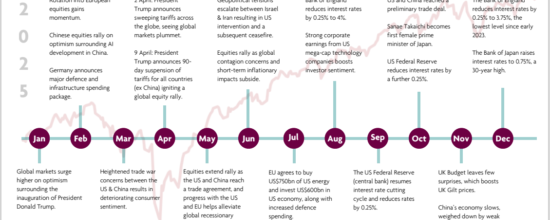Market Update: US stocks edge higher after Fed pauses rate rises
To download the PDF click here.
Federal Reserve officials leave interest rates unchanged but suggest further increases lie ahead.
The S&P 500 index and Nasdaq climbed higher after the US Federal Reserve (Fed) left interest rates on hold following 10 consecutive hikes. The Fed’s decision leaves interest rates at 5% to 5.25%, a high not previously seen since 2007. The annual pace of US inflation has eased to its lowest level in more than two years, but even with the pause, Fed officials have suggested two further increases may be needed this year. US inflation slowed in May to 4% from a year earlier, down from the 4.9% annual jump registered in April.
Stocks climbed higher after a deal on the US debt ceiling was reached, averting a default on the federal government’s debt. The bill to raise the debt limit passed votes in the House of Representatives and the Senate comfortably and will ensure the government can borrow to pay debts already incurred.
The S&P 500 has also been lifted by gains in market heavyweights Amazon, Apple and Tesla, recovering from its October 2022 lows. Factory output barely rose in May, suggesting businesses are growing cautious in the face of rising interest rates. US job creation has been surprisingly resilient, bucking most expectations. The unemployment rate was 3.7% in May and 339,000 jobs were added.
UK bonds hit by interest rates fallout
Amid high inflation and aggressive policy tightening from the Bank of England, bond prices have slumped. With UK inflation remaining stubbornly high, the Bank raised interest rates for the thirteenth time in a row by 0.5 percentage points to 5%. Inflation held steady at 8.7% in May despite expectations of a fall. Core inflation – which strips out volatile items like energy and food – rose to a 31-year high of 7.1%, up from 6.8% the previous month. Food inflation also remains high at nearly 15%.
Despite high inflation, rising interest rates and disruption caused by strikes the UK economy returned to growth in April, with GDP rising 0.2%. The rate of UK unemployment fell to 3.8% in the three months to April from 3.9% in the previous three months.
Wages are also growing at their fastest outside of the pandemic, putting further pressure on the Bank of England. Expectations that UK interest rates will keep climbing to fight inflation also lifted the pound to $1.269 against the dollar, the highest level since April 2022.
Euro area slips into recession
The euro area slipped into recession in the first three months of the year after high energy and food prices hit household spending. GDP shrank by 0.1% over the first three months of 2023 and the final quarter of 2022. A technical recession is generally defined as two consecutive months of negative economic growth. It comes after data from Germany, the region’s largest economy, showed that its GDP also shrank for a second consecutive quarter and slipped into recession.
Global stocks got a lift from growing expectations that China will have to bump up stimulus as its recovery stutters. China’s post-pandemic recovery is showing signs of losing the initial momentum seen in the first quarter. Figures for investment, property sales and retail sales have all fallen short of expectations, while the youth unemployment rate is also rising.



